Rejuvenation lasers are a type of cosmetic treatment that uses laser technology to improve the appearance of the skin and promote skin rejuvenation. These lasers emit specific wavelengths of light that target various skin concerns:
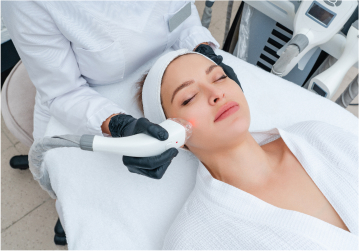
Rejuvenation lasers are a type of cosmetic treatment that uses laser technology to improve the appearance of the skin and promote skin rejuvenation. These lasers emit specific wavelengths of light that target various skin concerns:

The laser energy stimulates collagen synthesis, which helps to smooth out wrinkles and fine lines, resulting in a more youthful and rejuvenated appearanc. Rejuvenation laserse.
The laser energy resurfaces the skin, improving its texture and reducing the appearance of rough or uneven skin.
The treatment can improve the appearance of scars, including acne scars, surgical scars, and stretch marks. It promotes the remodeling of scar tissue and the production of new, healthier skin cells. Rejuvenation lasers
Lasers target areas of excess pigmentation, such as sunspots and age spots. It breaks down melanin pigment, leading to a more even skin tone.
Skin tightening laser treatments are commonly used to address sagging skin, wrinkles, and fine lines on various areas of the body, including the face, neck, abdomen, arms, and thighs. The treatment can help improve the appearance of loose or lax skin caused by factors such as aging, weight loss, or pregnancy.
can help stimulate collagen production and improve the appearance of stretch marks. These lasers target the affected areas, promoting the growth of new, healthier skin cells and reducing the appearance of stretch marks over time. Rejuvenation lasers
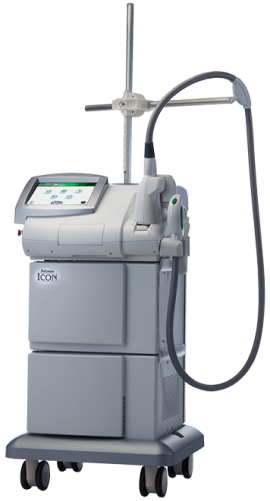
It utilizes fractional laser technology to target specific areas of the skin, stimulating collagen production and improving overall skin texture and appearance.
Fractional laser delivers laser energy in a fractionated pattern, creating microscopic columns of treated tissue surrounded by untreated skin. This fractional approach allows for precise targeting and promotes faster healing and recovery compared to traditional laser treatments requiring no downtime.
The procedure is generally well-tolerated, with minimal discomfort. Some patients may experience a mild warming or snapping sensation during the treatment, but it is usually well-managed with cooling techniques.
During the treatment, the handheld device is applied to the skin, delivering short pulses of light energy. Over time, the body’s natural healing processes help to reduce the appearance of the treated lesions, leading to clearer, more even-toned skin.
The number of sessions required may vary depending on the specific condition being treated and individual response to the treatment. Typically, multiple sessions are recommended to achieve optimal results, spaced a few weeks apart.
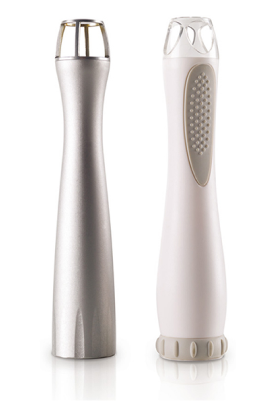
The CO2 laser is a type of cosmetic laser system that utilizes a carbon dioxide laser to deliver precise and controlled laser energy to the skin.
CO2 lasers work by emitting a concentrated beam of light that is absorbed by the water content in the skin. This causes the water molecules to heat up and vaporize the targeted tissue, effectively removing thin layers of damaged or aged skin. The controlled ablation and thermal effect of the CO2 laser stimulate collagen production and promote the growth of new, healthier skin cells.
Following the CO2 laser treatment, patients may experience redness, swelling, and some discomfort, similar to a sunburn-like sensation.
The healing process typically involves the formation of new skin, which may appear pink or reddish initially but gradually fades over time.
It is essential to follow post-treatment care instructions provided by our healthcare professional to optimize healing and minimize the risk of complications. After laser treatments, downtime typically ranges from 3 to 7 days.

It is an innovative fractional radiofrequency (RF) microneedling device
used for skin rejuvenation and improvement of various skin concerns.
This advanced technology combines microneedling and RF energy to
deliver controlled heat deep into the skin, stimulating collagen
production and promoting skin remodeling.
During the treatment, ultrafine microneedles penetrate the skin’s surface, creating tiny channels. Simultaneously, RF energy is delivered through the microneedles, heating the deeper layers of the skin. This process triggers the body’s natural healing response and encourages the production of new collagen and elastin fibers.
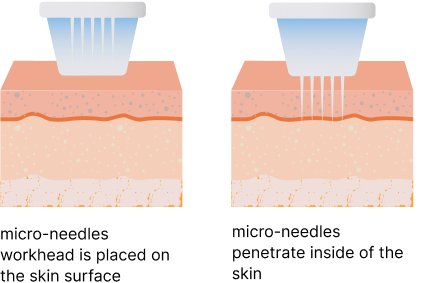

After the RF laser treatment, patients may experience some redness, swelling, and mild skin sensitivity, which usually subside within a few days. The skin will gradually improve over time as collagen remodeling takes place. Multiple treatment sessions may be recommended for optimal results, spaced a few weeks apart.
The biggest advantage of the RF laser is that it provides a safe and effective treatment option for patients seeking skin tightening benefits, regardless of their skin type.
The IPL (Intense Pulsed Light) is a type of laser technology used for various skin treatments. IPL devices emit multiple wavelengths of light that are absorbed by different chromophores in the skin, such as melanin (pigment) and hemoglobin (red blood cells).
The IPL is specifically designed to target and treat red and pigmented lesions on the skin. It can effectively address concerns like:
and vascular conditions like spider veins and rosacea.
Following the treatment, some redness, swelling, and mild skin sensitivity may occur. These side effects are usually temporary and resolve within a few days to a week. Post-treatment care instructions may include avoiding sun exposure and using sunscreen.
During the treatment, the laser handpiece is passed over the skin, delivering the fractional laser energy. The procedure may cause a warm or prickling sensation, but topical numbing creams can be applied to enhance comfort.
The number fractional laser sessions required varies depending on the individual’s needs and desired results. Typically, multiple treatment sessions are recommended, spaced several weeks apart, to achieve optimal outcomes.
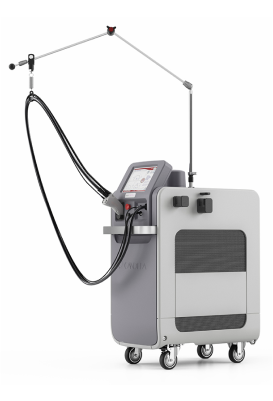
The GentleMax laser by Candela is a state-of-the-art laser system widely used for hair removal treatments. It combines two different laser technologies, Alexandrite and Nd:YAG, to effectively target and remove unwanted hair from various areas of the body.
The GentleMax laser emits a highly concentrated beam of light that is selectively absorbed by the melanin (pigment) in the hair follicles. The absorbed light energy is converted into heat, damaging the hair follicles and inhibiting future hair growth.
The GentleMax laser emits a highly concentrated beam of light that is selectively absorbed by the melanin (pigment) in the hair follicles. The absorbed light energy is converted into heat, damaging the hair follicles and inhibiting future hair growth.
One of the advantages of the GentleMax laser is its ability to treat a wide range of skin types and hair colors. The Alexandrite laser is effective for lighter skin tones and finer hair, while the Nd:YAG laser is suitable for darker skin tones and thicker, coarser hair. This makes it a versatile option for individuals with diverse skin and hair characteristics.
The GentleMax laser offers a safe and effective solution for long-term hair reduction, providing smoother and hair-free skin.
Patients may feel a slight sensation of warmth or mild discomfort, but it is generally well-tolerated. After the treatment, patients may experience mild redness or swelling in the treated area, but these side effects usually subside within a few hours to a day.
The GentleMax laser emits a highly concentrated beam of light that is selectively absorbed by the melanin (pigment) in the hair follicles. The absorbed light energy is converted into heat, damaging the hair follicles and inhibiting future hair growth.
Multiple treatment sessions are typically required to achieve optimal results. Hair grows in cycles, and the laser is most effective when targeting hair in the active growth phase. Therefore, multiple sessions spaced several weeks apart are recommended to target hairs in different growth stages and ensure long-lasting hair reduction.
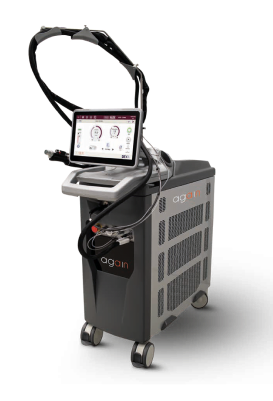
Vascular lasers are specialized devices that emit targeted wavelengths of light to treat various vascular conditions.
These lasers are specifically designed to target and treat blood vessels in the skin, addressing conditions related to their size, visibility, or abnormality.
Some people may experience mild discomfort or a sensation similar to a rubber band snap during the procedure, bruising or increased redness but this can be managed with cooling techniques or topical anesthesia.
During the treatment, the laser device emits a focused beam of light that is absorbed by the hemoglobin within the blood vessels. This absorption generates heat, which causes the blood vessels to coagulate and eventually be absorbed by the body’s natural processes.
The number of treatment sessions required can vary depending on the specific condition being treated and the individual’s response to the laser therapy.
Vascular lasers are commonly used for the following purposes:
Spider veins are small, dilated blood vessels that appear close to the surface of the skin, typically in a web-like pattern. Vascular lasers can effectively target and coagulate these veins, causing them to fade and become less visible.
Vascular lasers can also be used to improve the appearance of scars, particularly those that are red or raised. By targeting the blood vessels within the scar tissue, the laser can help reduce redness and flatten the scar, resulting in a more aesthetically pleasing appearance.
Rosacea is a chronic skin condition characterized by redness, flushing, and visible blood vessels on the face. Vascular lasers can target and reduce the visibility of these blood vessels, helping to alleviate the redness and improve the overall appearance of the skin.
Certain types of birthmarks, such as port wine stains or hemangiomas, involve an abnormal proliferation of blood vessels. Vascular lasers can selectively target and treat these blood vessels, leading to a lightening or fading of the birthmark over multiple treatment sessions.
In cases where acne is accompanied by redness and inflammation, vascular lasers can help by targeting the underlying blood vessels that contribute to these symptoms.
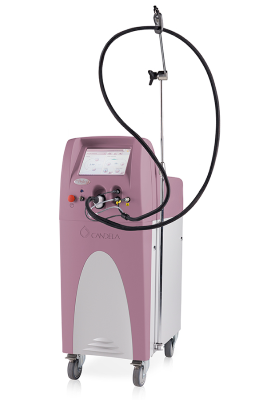
The Vbeam Perfecta laser system is a highly regarded pulsed dye laser that is widely recognized as the gold standard technology for treating vascular lesions especially safe and widely studied in infants and newborn vascular birthmarks.
It is known for its effectiveness and ease of use in addressing various types of vascular conditions.
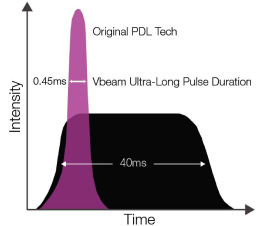
Each Vbeam Perfecta pulse is composed of 8 individual micropulses. Energy within each pulse is distributed across these micropulses – enabling you to select higher overall energies and successfully target vascular lesions with less downtime and pupura.
You may also select to more aggressively scale energy output to induce pupura and treat a more stubborn range of indications.
This process helps to shrink and reduce the appearance of vascular lesions, including conditions like rosacea, spider veins, port wine stains, and other vascular birthmarks.
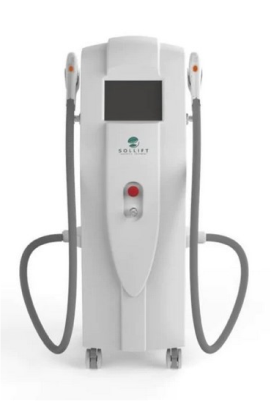
IPL (Intense Pulsed Light) laser treatment is a popular and effective option for addressing redness and vascularity in the skin. It utilizes broad-spectrum light pulses to target and reduce the appearance of blood vessels and redness associated with various conditions.
IPL treatment is commonly used for conditions such as:
It can also address other skin concerns like sun damage, hyperpigmentation, and uneven skin tone.
When used specifically for redness and vascularity, IPL targets the hemoglobin pigment in the blood vessels. The light energy is absorbed by the hemoglobin, causing the blood vessels to heat up and eventually collapse or be reabsorbed by the body. This process helps to diminish the redness and improve the overall appearance of the skin.
IPL laser treatment for redness and vascularity is typically performed in a series of sessions spaced a few weeks apart. The exact number of sessions required depends on the individual’s skin condition and response to treatment.
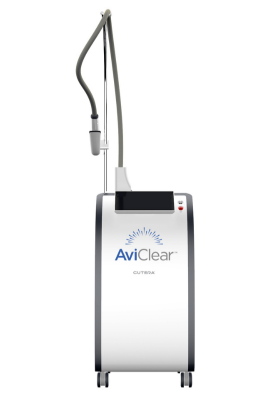
The laser light used in AviClear treatments is carefully calibrated to penetrate the skin and target the sebaceous glands without causing damage to surrounding tissues.
By delivering controlled energy to the glands, the laser treatment aims to reduce their activity and minimize oil production.
By suppressing the sebaceous glands, AviClear seeks to effectively reduce acne breakouts and improve the overall appearance of the skin. It offers a non-invasive alternative to prescription medications, making it an appealing option for individuals seeking a natural or drug-free approach to managing acne.
It’s important to note that the specific details, protocols, and efficacy of AviClear may vary depending on the specific device or technology being used. It is always recommended to consult with a qualified dermatologist or healthcare professional who can assess your individual needs and determine if AviClear or any other treatment is suitable for your particular case of acne.
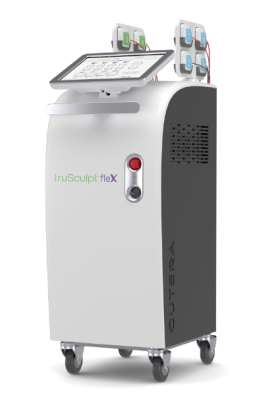
Radiofrequency laser lipolysis combines radiofrequency energy with laser technology to target and heat the fat cells. The combination of these energies increases the effectiveness of fat cell disruption and stimulates collagen production, resulting in skin tightening in addition to fat reduction.
One of the advantages of RF fat reduction is that it can effectively target specific areas of the body where excess fat is present. Common treatment areas include the abdomen, thighs, buttocks, arms, and love handles.
RF fat reduction treatments are generally non-invasive and non-surgical, which means they do not require incisions or downtime. The procedure is usually comfortable, and many patients can resume their normal activities immediately after the treatment.
It’s important to note that RF fat reduction treatments are not intended for significant weight loss or as a substitute for a healthy lifestyle.
They are best suited for individuals who have localized areas of stubborn fat that are resistant to diet and exercise.
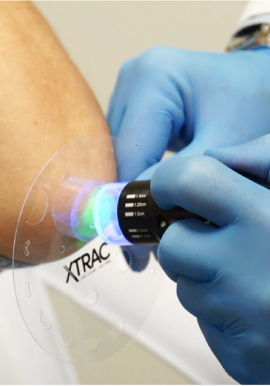
The medical excimer laser is primarily used in dermatology for the treatment of certain skin conditions, particularly those involving abnormal skin cell growth or inflammation. The excimer laser emits a concentrated beam of ultraviolet B (UVB) light at a specific wavelength, typically 308 nanometers.
The advantage of the excimer laser is its ability to deliver precise and targeted treatment to affected areas while minimizing exposure to healthy surrounding skin. This allows for effective treatment with minimal risk of side effects or damage to unaffected skin.
It’s important to note that the use of the excimer laser for these conditions may require multiple treatment sessions, and the specific treatment protocol will vary depending on the individual and the severity of the condition.
It is recommended to consult with our healthcare professionals specializing in laser therapy to determine if the excimer laser is an appropriate treatment option for your specific skin condition.
Some of the common applications of the medical excimer laser include:
The excimer laser can effectively target and treat localized areas of psoriasis, a chronic skin condition characterized by red, scaly patches. The laser’s focused UVB light helps to reduce inflammation and promote the healing of psoriatic plaques.
Atopic dermatitis, also known as eczema, is a chronic inflammatory skin condition characterized by itchy, red, and dry patches. The excimer laser can help alleviate the symptoms and reduce the inflammation associated with atopic dermatitis.
Vitiligo is a skin disorder that causes the loss of pigmentation, resulting in white patches on the skin. The excimer laser can be used to repigment the affected areas by stimulating the production of melanin in the skin cells surrounding the vitiligo patches.
Leukoderma refers to the localized loss of skin pigmentation, similar to vitiligo. The excimer laser can be used to target and stimulate repigmentation in the affected areas.
Blue light therapy is a device treatment that utilizes specific wavelengths of blue light to target and treat certain skin conditions.
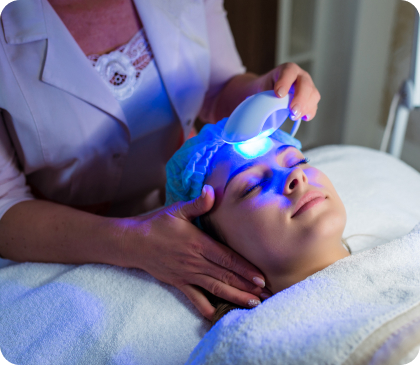
Blue light is often used in combination with a photosensitizing agent in a treatment known as photodynamic therapy. The photosensitizing agent is applied to the skin and absorbed by targeted cells.
When the blue light is applied to the treated area, it activates the photosensitizer, resulting in the destruction of targeted cells, such as precancerous cells or certain types of skin cancer cells.
After undergoing photodynamic therapy (PDT), it is normal to experience certain reactions, which may vary depending on the specific condition being treated and the individual’s skin type. Here are some common reactions that can occur after PDT:
Redness and swelling in the treated area are common immediate reactions following PDT. This can occur due to the activation of the photosensitizing agent by the light and the subsequent inflammatory response. The intensity and duration of redness and swelling can vary among individuals.
In some cases, the treated skin may develop peeling or crusting. This is a normal part of the healing process as the damaged skin cells shed, revealing fresher skin underneath. It is important not to pick at or peel off any crusts, as this can increase the risk of infection and delay healing.
After PDT, your skin may become more sensitive to sunlight and other sources of light. It is important to protect your treated skin from direct sunlight for a specified period as advised by your healthcare professional. Sunscreen, protective clothing, and staying in the shade can help minimize light sensitivity.
Temporary discoloration or changes in pigmentation can occur after PDT. The treated area may appear darker or lighter than the surrounding skin for a period of time. This is usually temporary and will gradually resolve as the skin heals.
Some individuals may experience a mild sensation of heat or discomfort during the PDT treatment or immediately afterward. This sensation is temporary and should subside relatively quickly. Rejuvenation lasers
It is important to note that the specific reactions and their severity can vary from person to person and depend on the area being treated.
Your healthcare professional will provide you with detailed post-treatment care instructions, including how to manage any discomfort or reactions, and what to expect during the healing process.